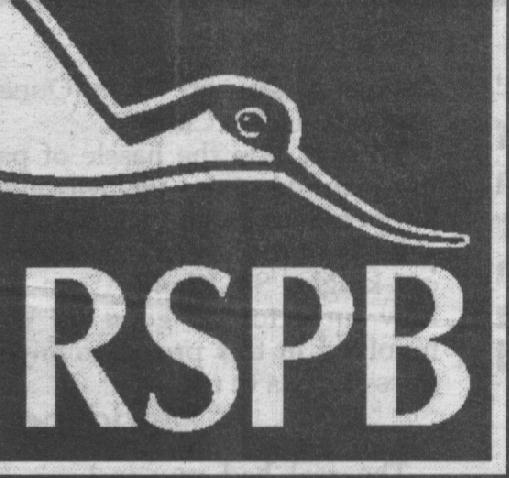|
AS the evenings slowly but surely start to provide
us with welcome light,
we also have the opportunity to enjoy our gardens and parks that
little bit
longer, providing us with the rich sights and sounds of birds and
their song,
as they gear themselves up for the breeding season.
There is a wonderful atmosphere created by the
embers of a fine March
day with the beautiful sounds of the song thrush echoing through
the twilight.
The characteristic notes, repeated two or three
times 'did-he-do- it....
did-he-do-it' - 'yes-he-did.....yes-he-did' are almost solemn and
mournful.
If you listen to the calls carefully, you can
hear the vast range of warbles,
chuckles and pure sweet notes that are copied from a variety of
other birds
and sounds
The song thrush is a wonderful mimic and can,
upon first hearing, fool the
birdwatcher into believing it is something else. Part of the song
is similar to
a little owl. The song thrush likes to sing from a high position,
though not as
often as the mistle thrush. Look out for them near the top of tall
trees, lamp
posts or roofs and church spires. They are equally happy in various
habitats
from parkland areas to churchyards and domestic gardens.
Good places to look out for them include RSPB
Scotland Baron's Haugh
reserve, Castlecary Low Wood, Palacerigg Country Park, Plains Country
Park and churchyards, small parks and gardens around Cumbernauld,
Kilsyth, Airdrie and Coatbridge which all provide suitable habitat.
Their presence can often be confirmed by the
discovery of an 'anvil',
where snail shells are bashed against a stone or rock, enabling
the thrush
to gain access to the tasty snack the shell protects.
Smaller than the similar mistle thrush, the song
thrush has narrower
markings on its belly, which is more buff and brown compared to
the
greyer and more heavily marked appearance of the mistle thrush.
Its
scientific name Turdus Philomena translates as nightingale thrush,
the
word philomena meaning darkness loving. Its name has varied over
the centuries, 'song thrush' only being established since the 17th
Century.
Previously, the common name was 'throstle' still
a common term in
England, with a 'throstle' appearing on the badge of West Bromwich
Albion football club. There has been a wide range of local names,
the
most widespread in Scotland being Mavis or Mavie. This curious name
is thought to originate from France or Spain. Superstition suggested
that the song thrush was deaf and strangely, at the age of ten years;
the thrush would dispose of its legs and grow new ones! The most
unfortunate belief of all for the bird, was that its flesh would
cure
sickness and convulsions.
ONE of our most majestic trees, the silver birch
has a wealth of
folklore and legend surrounding it. Traditionally used in a burner
for
the production of charcoal, its rising sap at this time of year
is popular
among wine makers in producing birch sap wine, where a tree is
drilled to allow sap to be siphoned off. This is then sealed
with a bung
or cork to allow easy access for future winemaking. The sap has
also
been drunk as a spring tonic and used as a hair conditioner. This
elegant and fast growing tree was popular with 19th Century Scottish
landscape painters, shown at its best in John Macwhirter's "TheLady
of the Woods". The highly durable white scaly bark was once
used as
writing paper and its rich healing properties led to its use as
an early
form of elastoplast. Placing a birch branch over the entrance to
a
property was thought to provide protection from misfortune.
MARCH is the second month of the Celtic festival
of Imbloc which
lasts until the 21st. It is believed that during this time, the
saints would
help drive out all negative energies as the days begin to noticeably
lengthen as we move away form the darker days of early February
that
marks the start of Imbloc. The word March comes from the roman god
of war and fertility Mars, while pagan beliefs consider the month
to be
the time of the 'storm moon'. The Spring Equinox occurs between
the
19th and 21st of March. This is when the day and night are of equal
length,
when both North and South Poles receive equal light. It symbolises
rebirth,
the awakening of the earth and a time for planting and new beginnings.
Medieval Europe and the Roman Republic celebrated New Years Day
in late March and it was not until late 16th Century when the Gregorian
calendar recognised the 1st of January as the new year in the western
world.
To find out more about wildlife,
reserves and
events in and around your area please get in touch
and we will send you an enquiry card for further
information.
Contact Mark Davies on
0141 576 2617 or E-mail
Mark.davies@rspb.org.uk
RSPB Scotland Forth Valley local group have
indoor meetings and talks in the Cowane Center,
Stirling. For further information contact Etta Payne
on 01324 711610, everyone will be most welcome.
RSPB Scotland works for a
healthy environment
rich in birds and other wildlife. We depend on the
support and generosity of others to make a difference.
If you would like to support our work, please join the Society.
Phone: 0141 576 2617
Email: Glasgow@rspb.org.uk
Website http://www.rspb.org.uk
Mark Davies, Community Liason Officer
RSPB, South and West Scotland.
|

